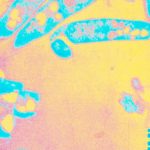Link to Pubmed [PMID] – 18497894
Nat Prod Rep 2008 Jun;25(3):447-54
Mycolactones are a family of highly related macrocyclic polyketides that exhibit immunosuppressive and cytotoxic properties. First discovered in 1999, they are the primary virulence factors produced by the environmental human pathogen Mycobacterium ulcerans, the causative agent of Buruli ulcer, and by some closely-related aquatic mycobacteria that cause disease in fish and frogs. Mycolactones are characterized by a common 12-membered lactone core to which is appended an unsaturated fatty acyl side-chain of variable length and oxidation state. This Highlight summarizes recent progress in understanding the structural diversity of the mycolactones, their biological activity and mode of action in mammalian cells, and the genetics, evolution, and enzymology of their biosynthesis.

